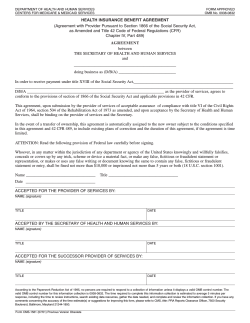
FAQ about GOSAT Research Announcement
FAQ about GOSAT Research Announcement 1. What is the Research Announcement? The Research Announcement (RA) is issued in order to solicit proposal of research topics from the world in order to promote the scientific researches on the observation data of Greenhouse gases Observing SATellite (GOSAT) which is scheduled to be launched in early 2009. Among the GOSAT Project members, basic research activities are scheduled to be conducted. However, the RA is issued expecting more fruitful scientific results from other worldwide research groups. In addition, in order to generate the data products with higher accuracy, the RA solicits, from public, study proposals on data processing algorithms, calibration, and validation. All research proposals responding to this RA will be subject to the evaluation process by the GOSAT RA Selection and Evaluation Committee and will be selected by the Three Parties (JAXA, NIES, and MOE) If selected, the proposal will be granted for:(1) the standard data distribution in early stage and the right to access to the research products, (2) the right to make observation requests, (3) the accommodation in obtaining other related data, etc. 2. Is it possible to submit data acquisition request by specifying the measurement point? Yes, it is possible. Please refer to the RA text chapter 7 Qualifications. 3. What kind of product is available? The product shown in the table will be provided to the RA investigator. To general users, standard product will be provided after validation and confirmation process of the accuracy to be conducted by the responsible person of the project and the other RA investigator. In contrast, for the detail of the available data to the RA investigator, please see chapter 4 Data Policy of the RA text. Table: List of GOSAT products Processing level Sensor /band Product Name FTS FTS L1A data CAI CAI L1A data L1A L1B L1B+ Internal (※) FTS scene HDF5 CAI scene HDF5 FTS scene HDF5 CAI frame HDF5 Any (on-demand) HDF5 FTS L1B data CAI CAI L1B data Standard CAI CAI L1B+ data Standard L2 CO2 column amount (SWIR) Standard L2 CH4 column amount (SWIR) Standard FTS TIR FTS SWIR FTS TIR L3 CAI L4B Format FTS CAI L4A Unit Internal (※) Standard FTS SWIR L2 Category L2 H2O column amount (SWIR) Research L2 CO2 column amount (TIR) Research L2 CH4 column amount (TIR) Research L2 CO2 profile (TIR) Standard L2 CH4 profie (TIR) Standard L2 Temperature profile (TIR) Research L2 H2O profile (TIR) Research L2 H2O column amount (TIR) Research L2 cloud flag Standard L2 cloud property Research L2 Aerosol Product Research L3 global CO2 distribution (SWIR) Standard L3 global CH4 distribution (SWIR) Standard L3 global CO2 distribution (TIR) Standard L3 global CH4 distribution (TIR) Standard L3 global radiance distribution (all pixels) Standard L3 global radiance distribution (clear sky) Standard L3 global cloud property Research L3 global aerosol property Research L3 global NDVI Standard L4A global CO2 flux Standard L4A global CH4 flux Research L4B global CO2 distribution Standard L4B global CH4 distribution Research - - Any (on-demand) HDF5 CAI frame HDF5 Global (monthly or quarterly average) HDF5 Global (every 3 days) Global (monthly or quarterly average) Global (bi-weekly) 64 locations across the globe (annually) 64 locations across the globe (annually) Global 2.5° mesh (monthly) Global 2.5° mesh (monthly) HDF5 HDF5 HDF5 text text NetCDF NetCDF 4. When will the data distribution start? Refer to page 8 of the RA text. As for the standard products, in general, L1 products at the C stages are planned to be released nine (9) months after the launch, and L2 and L3 products at the C stages are planned one (1) year after the launch, whereas L4 products at the C stage are expected to be ready in two (2) years after the launch. The RA Investigators who will be engaged in research on processing algorithms, calibration and validation (RA*) will have the right to access to L1 products at the P stages, before calibration, from three (3) months after the launch and L2 and L3 (standard) products, before validation at the P stages from four (4) months after the launch. The other RA investigators will be allowed to access the validated L1 products at the Ca stages from six (6) months after the launch and the L2 and L3 (standard) products at the V stages from nine (9) months or later after the launch. Table: The time of delivery for standard product A necessary range of observations is offered to the RA investigator regarding the research product. 5.Can data be acquired by specifying the measurement point? If the study proposal is accepted, the measurement point can be specified for observation request. However, it is judged whether the observation request will be conducted or not, based on its adaptability, necessity, and emergency. 6.What is the advantage of the RA investigator? Please refer to RA text 8.1. Main advantage is three of the following. (1) Requesting a delivery of standard products before the release to the public. (2) Requesting a delivery of research products of the research on the selected theme. (3) Submitting requests for new data acquisition necessary for the implementation.
© Copyright 2025













![[WCR-300S] How to Change the Wireless Network Name(SSID)](http://cdn1.abcdocz.com/store/data/000232989_1-c13ffbaf9a88e423608ef46454e68925-250x500.png)

